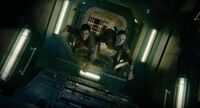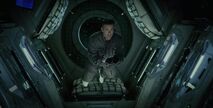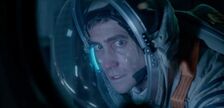After the film came out, some foreign technology media did not miss this hot spot, and contacted relevant NASA professionals one after another to obtain their views on the film, as well as relevant policies and regulations in the real situation.
Business Insider interviewed Cathy Conley, a member of NASA's "Planetary Protection" division, who said that in the real world, if it develops to the stage of bringing back samples from Mars, it does not make much sense to conduct research on the space station. The reasons are as follows:
Research on possible unknown specimens will require the highest level of human, material and equipment support, and it is very expensive and impractical to move all these into space;
As long as it is suspended in the sky, there is a risk of falling, so it is better to recover it safely on the ground from the beginning, and establish a special level 4 biosafety laboratory for analysis.
The Verge , through aviation reporter Loren Grush, once again introduced NASA's Office of Planetary Protection and a series of behavioral guidelines, recommendations and plans, the first of which is "The samples brought back by spacecraft from Mars should be classified as potentially dangerous. Items are quarantined and processed until proven safe." There is also a guiding principle of "erring on the side of caution". According to this, the two reporters in the comment expressed regret and ridicule for teasing Calvin, using electricity to power it, and spraying it with fire in the film.
GeekWire asked Adam Rutherford, the film's technical advisor, to talk about the considerations for the setting. He explained that some of the surreal settings are based on the near-future setting of the film, allowing the space station to do things that cannot be done in reality - study unknown biological samples and perform medical emergencies. In reality, what is most likely to happen is to build a facility on Earth dedicated to studying the returned samples from the seal. The core idea of the film is to conduct research on the space station - so that there is room for a space horror movie to happen.
Another GeekWire article asked John Rummel, former NASA planetary protection officer, for a Q&A. It is clear that it is their unanimous tendency to safely return sealed sample jars to Earth for research. Once this happens in the future, NASA will issue detailed rules. Instruct the establishment of research bases, sealing tanks and various measures. When asked why, John said: "What is in the sky will eventually fall". The International Space Station, like anything else in Earth orbit, will eventually crash to the ground. Therefore, it is better to recover the samples through a controlled landing, and the research institutions on the ground will not "crash" and can continue to receive supplies.
In addition, the space station is also susceptible to the "going home mentality" ("going home mentality" refers to the pilot's rush to complete the voyage, and may take rash, dangerous and neglectful behaviors to fly). The study of unknown samples is unpredictable, and researchers eager to return to the ground from the space station are likely to draw biased and arbitrary conclusions about experimental results.
In addition, working on the ground can integrate a large number of personnel to provide support and supervision at multiple levels. Theory, investigation, technology, mechanical maintenance, public opinion... all ensure that the situation in which a researcher acts without authorization and is helpless in the film will not happen.
Space.com also quoted Cathy Conley, NASA's planetary protection officer, on those two points:
1. Will fall. Whether an anomaly or the end of its natural life, the space station will fall to the ground.
2. Expensive. The conditions for doing experiments in space are limited. The study of Martian samples will be unprecedentedly complex, requiring the most extensive and tooled laboratories, and the space station has very limited conditions. Even if the required equipment is moved up, it needs to be calibrated and readjusted in a weightless state, which is likely to consume too much unnecessary effort, and the equipment may even become unreliable. In addition, because the research object is unknown, you cannot predict the analysis and tools that need to be done in advance. When you need additional equipment or the existing equipment is damaged and needs to be replaced, the ground laboratory only needs to call the manufacturer for delivery. , while at the space station you need to wait for them to send a rocket. This is really extremely laborious and expensive.
Australian technology website Gizmodo published the views of SETI Society astronomer Seth Shostak. He believes that in a space station far away from the ground, even if there is an isolation plan in advance, astronauts may not strictly implement it. After all, NASA cannot remotely control it, nor can it stop someone from taking an electric prod to electrify a sample in time... despite the movie background NASA certainly did a lot of communication with the space station and gave instructions on how to handle the samples, but it was the fact that astronauts weren't necessarily obedient that brought the drama. The following article discusses that science fiction movies always presume that alien life will eat or kill, but it is also likely that its physiology is not compatible with life on Earth, and we are as meaningless (indifferent) as plastic to aliens.
View more about Life reviews











